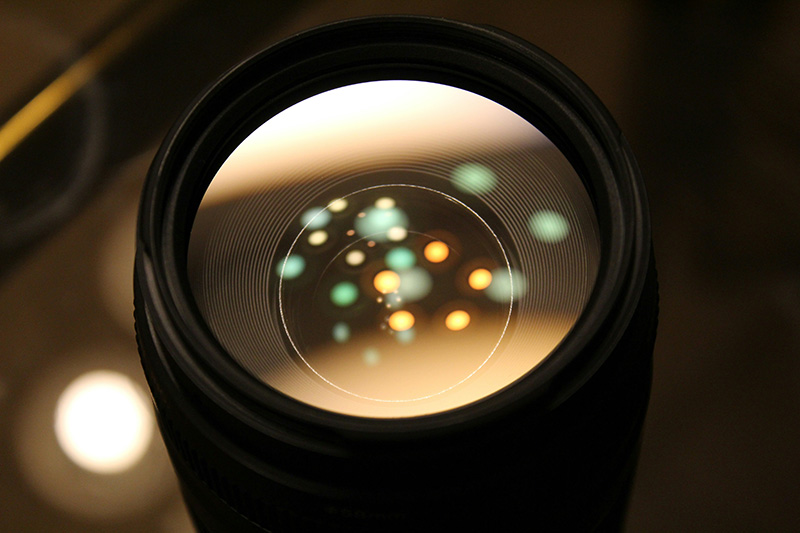The interface type and rear focal length (i.e., flange focal distance) of an optical lens are fundamental parameters that govern system compatibility and determine the operational suitability of imaging setups. This paper presents a systematic classification of prevalent lens mount types, accompanied by a detailed analysis of their technical specifications and functional implications.
I. Primary Lens Mount Types and Corresponding Flange Focal Distances
C-Mount
Flange focal distance: 17.526 mm
Characteristics: A standardized mechanical interface extensively employed in industrial imaging applications, specifically engineered for integration with C-mount lenses. In cases where a CS-mount lens is inadvertently mounted, the insertion of a 5 mm adapter spacer is required to restore correct image plane positioning.
Applications: Predominantly utilized in machine vision systems and automated inspection platforms, where mechanical consistency and interchangeability are critical.
CS-Mount
Flane focal distance: 12.526 mm
Characteristics: Maintains identical thread dimensions to the C-mount but features a reduced flange distance, which precludes direct compatibility. Mismatched configurations can lead to significant focus errors or complete inability to achieve sharp focus, underscoring the necessity for precise component matching during system assembly.
M12/S-Mount
Flange focal distance: Typically 12 mm or 17 mm
Characteristics: Characterized by a compact footprint and cost-effective design, this mount serves as a miniaturized alternative to conventional C/CS interfaces, enabling high integration density.
Applications: Particularly advantageous in embedded vision architectures, including micro camera modules, wearable imaging devices, and Internet of Things (IoT)-enabled sensing nodes.
Camera Lens Mounts (e.g., Canon RF, Sony E, Nikon Z)
Flange focal distance: Model- and manufacturer-dependent (e.g., approximately 18 mm for Sony E-mount)
Characteristics: Facilitates bidirectional electronic communication between lens and camera body, supporting advanced functionalities such as autofocus actuation, aperture modulation, and metadata transmission. These mounts are integral to modern mirrorless camera ecosystems and are widely deployed in both consumer and professional-grade photographic equipment.

II. Application-Oriented Guidelines for Lens Mount Selection
Industrial Inspection
C-mount or CS-mount lenses should be prioritized to ensure mechanical and optical alignment with industrial camera sensors. Crucially, the lens must project an image circle sufficient to fully encompass the sensor’s active area; failure to do so may result in vignetting or partial field-of-view loss, thereby compromising measurement accuracy and system reliability.
Creative Photography
Native mirrorless camera mounts (e.g., Sony E, Canon RF) are recommended due to their robust electronic interoperability and support for third-party and specialty optics (e.g., Lensbaby Sweet 22). This enables photographers to leverage manual focus mechanisms and unique optical effects, enhancing creative flexibility and artistic control.
Telephoto and Super-telephoto Applications
Ultra-telephoto lenses (e.g., Sony 400–800 mm f/4.5–5.6 GM OSS) generally employ proprietary bayonet mounts optimized for specific camera systems. When selecting such lenses, it is essential to assess compatibility with in-body image stabilization (IBIS) systems and teleconverters to preserve optical performance, autofocus responsiveness, and overall system functionality.
Compact Device Integration
The M12 mount, owing to its miniature size and lightweight construction, is particularly well-suited for space-constrained environments requiring high packaging density. Its application spans drone-based imaging systems, medical endoscopic devices, and distributed IoT vision networks, where miniaturization directly translates into enhanced deployability and system efficiency.

III. Interface Compatibility Constraints in Specialized Optical Systems
Scheimpflug Lenses
These lenses exploit angular misalignment between the lens plane and image plane—governed by the Scheimpflug principle—to extend depth of field for imaging across inclined surfaces. However, the inherently short back focal distance associated with C-mounts often restricts the physical clearance needed for tilt adjustment, making standard integration impractical and typically necessitating custom-designed mechanical housings.
Reflective (Catadioptric) Lenses
By employing a folded optical path via reflective elements, these lenses achieve substantial reductions in axial length and mass. Despite these advantages, their internal architecture involves complex alignment requirements and stringent tolerance controls, demanding dedicated mechanical interfacing and optical calibration for each host platform, thus limiting general-purpose adaptability.
In conclusion, the selection of an appropriate lens mount must be grounded in a thorough evaluation of flange focal distance constraints, functional demands, and system-level integration requirements. In industrial contexts, the emphasis lies on mechanical precision, long-term stability, and repeatability; in contrast, creative photography applications place greater value on system versatility, expandability, and support for diverse optical configurations.
Post time: Oct-29-2025





